High pressure transmitters for hydraulic systems. Ideal for material testing, actuation control, cranes, and lifting equipment requiring reliable > 100 bar / 1500 psi monitoring.
This range of high pressure transmitters is specifically designed for robust performance in demanding hydraulic applications where pressures exceed 100 bar (1500 psi). These instruments feature a reliable 4 to 20 mA current output for superior signal integrity in industrial settings and are available with a variety of accuracies, electrical interfaces, and pressure connector types to suit diverse installation requirements. Commonly utilized in material testing machines, actuation control systems, pressure rating test equipment, and heavy lifting machinery like cranes and elevators, these transmitters provide critical pressure measurements for control, safety, and system diagnostics in high-stress hydraulic circuits.
 TPSA Precision High Pressure Transducer - High pressure transducer for pressure testing applications with pressure ranges from 0...4 bar (60 psi) up to 0...1000 bar (15,000 psi) gauge with a measurement accuracy of 0.1%.
TPSA Precision High Pressure Transducer - High pressure transducer for pressure testing applications with pressure ranges from 0...4 bar (60 psi) up to 0...1000 bar (15,000 psi) gauge with a measurement accuracy of 0.1%.  DMP 335 All Welded Stainless Steel Diaphragm Pressure Sensor - All welded stainless steel diaphragm pressure sensor for mobile hydraulics, refrigeration or oxygen applications. This pressure sensor is available in the ranges from 6 bar up to 600 bar gauge with a 4-20mA or 0-10Vdc output signal.
DMP 335 All Welded Stainless Steel Diaphragm Pressure Sensor - All welded stainless steel diaphragm pressure sensor for mobile hydraulics, refrigeration or oxygen applications. This pressure sensor is available in the ranges from 6 bar up to 600 bar gauge with a 4-20mA or 0-10Vdc output signal.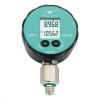 LEO3 Current or Digital Output Pressure Gauge - LCD digital pressure gauge powered externally by a 2 wire series 4-20mA current loop or a digital interface.
LEO3 Current or Digital Output Pressure Gauge - LCD digital pressure gauge powered externally by a 2 wire series 4-20mA current loop or a digital interface.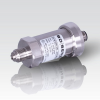 DMP 336 Hydrogen (H2) Gas Compatible Pressure Transmitter - All stainless steel 316L welded wetted parts pressure transmitter for measuring hydrogen gas
DMP 336 Hydrogen (H2) Gas Compatible Pressure Transmitter - All stainless steel 316L welded wetted parts pressure transmitter for measuring hydrogen gas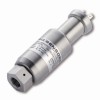 DMP304 Ultra High Range Hydraulic Pressure Transducer - Current output pressure transducer for measurement ranges from 0 to 2000 (30000 psi) range up to a maximum range of 6000 bar (90000 psi).
DMP304 Ultra High Range Hydraulic Pressure Transducer - Current output pressure transducer for measurement ranges from 0 to 2000 (30000 psi) range up to a maximum range of 6000 bar (90000 psi). 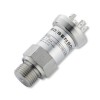 DMP333 High Range Precision Pressure Transmitter - The DMP 333 is a stainless steel 316L wetted parts pressure sensor for high pressure ranges on applications such as hydraulic test benches, presses, and hydraulic actuation.
DMP333 High Range Precision Pressure Transmitter - The DMP 333 is a stainless steel 316L wetted parts pressure sensor for high pressure ranges on applications such as hydraulic test benches, presses, and hydraulic actuation. TPHADA Ultra High Range Pressure Sensor - Extra high pressure transmitter with 4-20mA current loop or amplified voltage output signal in pressure ranges from 1000 up to 5000 bar gauge.
TPHADA Ultra High Range Pressure Sensor - Extra high pressure transmitter with 4-20mA current loop or amplified voltage output signal in pressure ranges from 1000 up to 5000 bar gauge.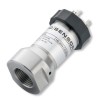 DMP334 Hydraulic Pressure Transducer for Very High Pressures - DMP 334 is a high range pressure transducer designed for measuring hydraulic pressures up to 2200 bar (32,000 psi) .
DMP334 Hydraulic Pressure Transducer for Very High Pressures - DMP 334 is a high range pressure transducer designed for measuring hydraulic pressures up to 2200 bar (32,000 psi) .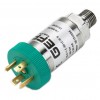 TK Industrial Pressure Transmitter - General purpose industrial pressure transmitter with a 4-20mA current loop or amplified voltage output available in range from -1 to +1 barg up to 500 barg
TK Industrial Pressure Transmitter - General purpose industrial pressure transmitter with a 4-20mA current loop or amplified voltage output available in range from -1 to +1 barg up to 500 barg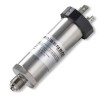 DMP333i Rangeable High Pressure Precision Transducer - High performance transducer with adjustable scaling for modifying the pressure range for different applications. Ranges from 0-60 bar up to 0-600 bar.
DMP333i Rangeable High Pressure Precision Transducer - High performance transducer with adjustable scaling for modifying the pressure range for different applications. Ranges from 0-60 bar up to 0-600 bar. KX ATEX Non-Sparking/Increased Safety (Ex nA/ec) SIL2 Approved Pressure Sensor - The Gefran KX pressure sensor is ATEX Ex nA non-sparking approved for use in zone 2 hazardous areas with flammable gas or dust atmospheres, and is SIL 2 approved for additional safety. The KX is available in ranges from -1 to 1 bar up to 1000 bar.
KX ATEX Non-Sparking/Increased Safety (Ex nA/ec) SIL2 Approved Pressure Sensor - The Gefran KX pressure sensor is ATEX Ex nA non-sparking approved for use in zone 2 hazardous areas with flammable gas or dust atmospheres, and is SIL 2 approved for additional safety. The KX is available in ranges from -1 to 1 bar up to 1000 bar. KX ATEX Intrinsically Safe SIL2 Approved Pressure Sensor - The Gefran KX pressure sensor is ATEX approved for use with intrinsic safety barriers in hazardous areas, and is SIL 2 approved for additional safety. The KX is available in ranges from -1 to 1 bar up to 1000 bar.
KX ATEX Intrinsically Safe SIL2 Approved Pressure Sensor - The Gefran KX pressure sensor is ATEX approved for use with intrinsic safety barriers in hazardous areas, and is SIL 2 approved for additional safety. The KX is available in ranges from -1 to 1 bar up to 1000 bar.
- 5000 bar Pressure Transmitter with AE HP fitting
- 20,000 psi g digital pressure gauge with 4 to 20 mA output
- 300°C max temperature, 0 to 300 bar, high range pressure sensor
- Monitoring high-pressure seawater pumps on merchant vessels with submersible pressure transmitters
- 5000 psi WECO® 1502 pressure transmitter and loop indicator
- Water jetting high pressure pump 1600 bar/23000 psi 4-20mA pressure sensor
Find out more about High Pressure Transmitters to determine which product options and capabilities will best meet your application requirements.
High pressure transmitters engineered for demanding hydraulic applications typically feature a robust 4 to 20 mA current loop output. This analogue signal is favoured in industrial environments for its inherent noise immunity over long cable distances and its ability to diagnose loop failures, which is crucial when monitoring pressures exceeding 100 bar (1500 psi). The selection of such a transmitter necessitates careful consideration of the required accuracy, as applications can range from general system monitoring to precise control in dynamic hydraulic circuits. Different sensor technologies within these transmitters will offer varying levels of accuracy, often expressed as a percentage of full scale (FS), impacting repeatability and resolution for critical measurements.
The electrical interface is another key specification, with options such as DIN 43650 connectors, M12 circular connectors, or integral flying leads with cable glands often available. The choice here is frequently dictated by the installation environment, considering factors like required IP rating for protection against dust and moisture ingress, vibration resistance, and ease of maintenance or replacement. Similarly, pressure connector types are critical for ensuring a leak-tight and safe seal at very high operating pressures. Common options include NPT, BSPP, SAE/UNF threads, and specialized high-pressure fittings like Autoclave or API spec connections, each suited to different regional standards or extreme pressure containment requirements found in hydraulic systems.
These transmitters are integral to the safe and efficient operation of hydraulic systems across numerous industrial sectors. In material testing machines, they provide vital pressure data for determining material strength, fatigue life, or burst pressure limits. For actuation control systems, such as those found in hydraulic presses or servo-hydraulic test rigs, these transmitters deliver the feedback necessary for precise force and position control. Pressure rating test equipment relies heavily on accurate high-pressure measurement to certify components like hoses, valves, and vessels.
Further applications extend to mobile and heavy machinery. Lifts and elevators utilize these sensors to monitor hydraulic ram pressure for smooth operation and load balancing. Cranes and other heavy lifting equipment depend on them for overload protection and safe working load (SWL) indication. They are also frequently employed in hydraulic power units (HPUs) to monitor system pressure, in high-pressure water jet cutting machinery for precise nozzle pressure control, and within specialized industrial tools that rely on significant hydraulic force for operations such as bolt tensioning or swaging. The robust construction, often involving stainless steel wetted parts, ensures compatibility with common hydraulic fluids and resilience in harsh operating conditions.
Product Help
Why do our high pressure transmitters keep failing?
Not all pressure transmitters use the same sensing technology and some are more suited to measuring high pressures than others. It is high pressure spikes that are the most common cause of pressure transmitter failure and they will punch or rip a hole in a diaphragm if the right precautions are not implemented.
Cause of damage
High pressure spikes
High pressure spikes are typically generated in hydraulic systems where fluids are flowing under high pressure. It is the sudden change in momentum of the fluid in the system or the release of stored pressure from valves opening and closing that are the main cause of sudden over-pressure.
The high pressure surges generate a tremendous amount of energy over a very short time period which can be very difficult to detect and if they are allowed to reach a diaphragm that is not adequately protected they can cause irreparable damage.
Cavitation
Another cause of high range pressure transmitter failure is cavitations, which is the sudden collapse of a void generated by trapped air or fluid displacement which send out shockwaves. These resulting shockwaves are a risk to any thin material such as a diaphragm that happens to be within range.
Ways to protect from failure
If you are experiencing an unusual number of high pressure transmitter failures then you may want to try one of these methods to resolve the problem.
Use a pressure sensor which has a robust sensing technology
A high range pressure transmitter where the sensing diaphragm is in direct contact with the fluid media have relatively thick diaphragms which offer more protection against shockwaves caused by cavitations or pressure surges. However they are still vulnerable to low frequency over-pressure which is not so easily dissipated or absorbed unless physical mechanical stops are located behind the diaphragm to prevent it from being overstressed.
Install overpressure protection between a vulnerable pressure transmitter and the source of surge pressures
The most vulnerable pressure sensor technology to hydraulic pressure spikes are those that have a oil filling between a very thin isolation membrane and the sensing diaphragm. Pressure transmitters that use this type of technology can be protected by fitting a snubber to the pressure port which will dissipate any shockwaves before they reach the thin isolation membrane.
Snubbers have either sintered porous filters or small bore restrictions to dampen any pressure shocks or surges. The main disadvantages of using a snubber is that they slow down pressure measurement response and can become blocked by particles over time.
Re-locate the pressure transmitter to a position away from the source of pressure spikes.
Finding a location in the system which offers the lowest chance of over-pressure spikes can be as easy as positioning the pressure transmitter as far away as possible from bends or restrictions in the pipe work which are potential pressure spike hotspots.
But to truly understand the pressure spike behaviour of a hydraulic system it should be tested by fitting high dynamic response strain gauge output pressure transducers at different locations and examining the various operation modes with an oscilloscope or high sample rate data acquisition card.
Another method is to purposely fit a lower range pressure sensor and try it in different locations and examine the zero shift of the output signal after testing at each location. The location that generates the smallest zero shift is likely to be the best position for the pressure transmitter.
Measurement accuracy when using a high range sensor for lower pressures
My test procedure specifies that pressure measurements should be taken between 20% and 80% of the instrument’s full scale. Can I use a single 0-700 bar pressure transmitter for tests at both high pressures and much lower pressures like 50 bar, or do I need a dedicated lower-range transmitter?
The practice of confining measurements to the central part of an instrument’s range is a common guideline, particularly for mechanical gauges, to ensure optimal accuracy. Modern high-precision digital transmitters, however, offer significantly more flexibility due to their excellent linearity and resolution across the entire measurement span.
A high-stability piezoresistive transmitter is designed for high accuracy (e.g., ±0.05% FS) and very high resolution. This allows it to reliably detect minute pressure changes even at the low end of its scale. The critical factor is whether the sensor’s absolute error, which is fixed based on its full-scale range, is acceptable for your low-pressure measurement.
The accuracy of a pressure transmitter is typically specified as a percentage of its Full Scale (%FS). For a 700 bar sensor with ±0.05% FS accuracy, the fixed uncertainty is ±0.35 bar (700 bar×0.0005).
- When measuring a pressure of 500 bar, this ±0.35 bar uncertainty represents a very small error of just ±0.07% of the reading.
- When measuring a pressure of 50 bar, the same ±0.35 bar uncertainty now represents a much larger error of ±0.7% of the reading.
Therefore, you must determine if a potential error of ±0.7% of the reading at 50 bar falls within the required tolerance for your test. While a single high-range, high-accuracy sensor can be technically capable and offer the operational convenience of covering a wide variety of tests, a dedicated lower-range sensor may still be required if your quality standards or procedures demand a lower percentage-of-reading error at those lower pressures.
